Amid the rolling hills of Taichung County, a massive US$31 billion investment is fast changing a landscape of sugar cane and sweet potato farms into lines of slick towers, which will house the latest in cutting edge technology.
That technology will allow the Central Taiwan Science Park (中部科學園區) to deliver to the world's lounge rooms the latest in wide flat panel TVs and super computer screens, some big enough to match a three-seater couch in size.
But it is the speed of development and the rate of companies willing to sign on to the project, on the outskirts of Taichung City, that has impressed its backers and confounded critics.
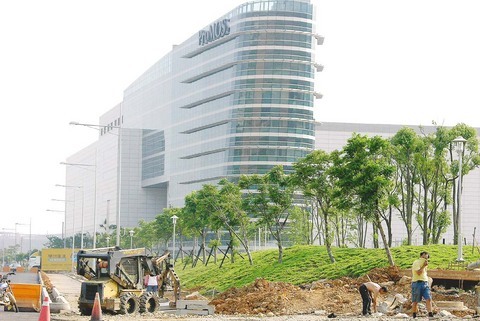
PHOTO: AFP
Lai Ying-hsi (
"They felt why does Taiwan need another high-tech industrial park while the other ones in the south are only half booked by potential investors due to economic sluggishness," Lai said.
Since the study, 72 companies ready to invest NT$1.04 trillion (US$31.04 billion) have won approvals, among them industry leaders including AU Optronics Corp (友達光電), ProMOS Technologies Inc (茂德科技) and US-based Corning Inc.
Lai said that it was Taichung's stable electricity and steady water supply which eventually convinced the authorities to proceed. Taichung boasts one of a biggest thermal power plants in Asia, while chronic water shortages have dogged science and technology parks elsewhere in the country.
Yang Wen-ke (楊文科), deputy director-general of the Provisional Office of Central Taiwan Science Park (中科籌備處), said the rapid pace of its development -- in an industry which is consistently tied to tight construction deadlines to deliver next generation products -- was a big factor in winning over more firms.
The first companies began opening their doors within 10 months of the project's drafting.
"The pace of its development is the fastest ever in Taiwan's efforts to build high-tech industrial parks," Yang said. "It changed so fast, you would be amazed by the vast differences registered over every month."
It took AU Optronics just 15 months to complete construction of an NT$80 billion complex to produce 60,000 panels a month, including some for revolutionary 74x60 inch television sets.
"AU Optronics Chairman Lee Kun-yao (李焜耀) said `if AU Optronics had built the plant elsewhere, the construction may not have been as swift'," Lai said, adding that the project was completed 47 days ahead of schedule.
"That is important to a time-sensitive industry," Lai said.
US-based Corning followed suit, with a groundbreaking in September last year for a glass melting plant that will produce compacted glass substrate to be used in LCD screens.
Then came local memory chip maker ProMOS Technologies, which is designing cutting-edge 90-nanometer technology to produce microchips and 40,000 300mm wafers a month in two projects which cost NT$85 billion to build.
While optoelectronics will account for 34 percent of the park's ongoing investment projects, the balance will be filled by precision machinery, biotechnology, semiconductor, computer peripherals and telecommunication projects.
"The demand for land is much stronger than our previous estimates," Yang said.
Authorities plan to expand the size of the park to 1,200 hectares after 94 percent of the current 413 hectares of land was booked.
Yang said he was confident the new industrial park would eventually outperform the Hsinchu Science Industrial Park (新竹科學園區) in the north, which has been hailed as the nation's answer to Silicon Valley in the US.
The Hsinchu science park houses 384 high-tech companies focusing on semiconductors, telecommunications, and computer related industries. It churned out products worth US$32.41 billion last year.
But the LCD and microchip industry is renowned for its huge consumption of water and investors at Hsinchu have been annoyed by past occasional water shortages.
"The new industrial park is fast coming from behind," Yang said proudly of the Taichung project.
Lai touched a raw nerve in regards to competing parks elsewhere, when he asked rhetorically: "Have you ever heard of central Taiwan being gripped by a water shortage?"
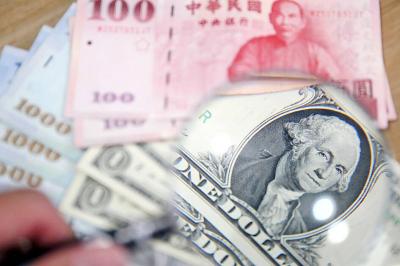
The US dollar was trading at NT$29.7 at 10am today on the Taipei Foreign Exchange, as the New Taiwan dollar gained NT$1.364 from the previous close last week. The NT dollar continued to rise today, after surging 3.07 percent on Friday. After opening at NT$30.91, the NT dollar gained more than NT$1 in just 15 minutes, briefly passing the NT$30 mark. Before the US Department of the Treasury's semi-annual currency report came out, expectations that the NT dollar would keep rising were already building. The NT dollar on Friday closed at NT$31.064, up by NT$0.953 — a 3.07 percent single-day gain. Today,
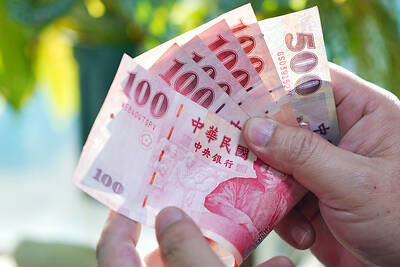
‘SHORT TERM’: The local currency would likely remain strong in the near term, driven by anticipated US trade pressure, capital inflows and expectations of a US Fed rate cut The US dollar is expected to fall below NT$30 in the near term, as traders anticipate increased pressure from Washington for Taiwan to allow the New Taiwan dollar to appreciate, Cathay United Bank (國泰世華銀行) chief economist Lin Chi-chao (林啟超) said. Following a sharp drop in the greenback against the NT dollar on Friday, Lin told the Central News Agency that the local currency is likely to remain strong in the short term, driven in part by market psychology surrounding anticipated US policy pressure. On Friday, the US dollar fell NT$0.953, or 3.07 percent, closing at NT$31.064 — its lowest level since Jan.
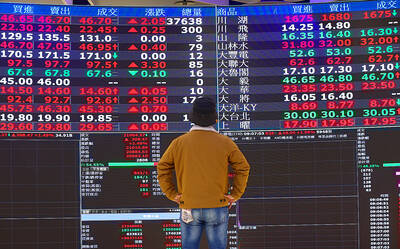
The New Taiwan dollar and Taiwanese stocks surged on signs that trade tensions between the world’s top two economies might start easing and as US tech earnings boosted the outlook of the nation’s semiconductor exports. The NT dollar strengthened as much as 3.8 percent versus the US dollar to 30.815, the biggest intraday gain since January 2011, closing at NT$31.064. The benchmark TAIEX jumped 2.73 percent to outperform the region’s equity gauges. Outlook for global trade improved after China said it is assessing possible trade talks with the US, providing a boost for the nation’s currency and shares. As the NT dollar
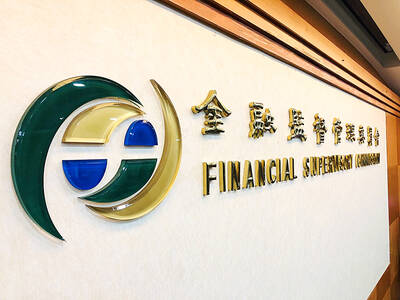
The Financial Supervisory Commission (FSC) yesterday met with some of the nation’s largest insurance companies as a skyrocketing New Taiwan dollar piles pressure on their hundreds of billions of dollars in US bond investments. The commission has asked some life insurance firms, among the biggest Asian holders of US debt, to discuss how the rapidly strengthening NT dollar has impacted their operations, people familiar with the matter said. The meeting took place as the NT dollar jumped as much as 5 percent yesterday, its biggest intraday gain in more than three decades. The local currency surged as exporters rushed to